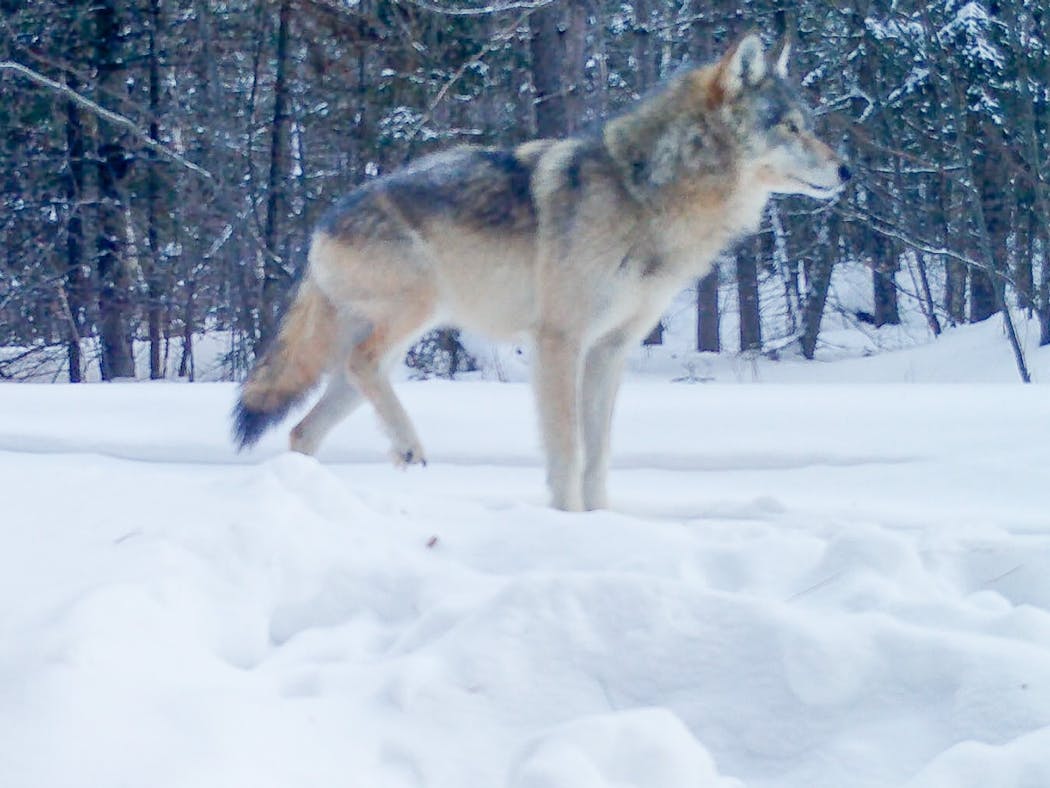The wolves hear a splash — the slap of a fish tail on water. They perk their ears and run to the low creek or shallow river pool of the northern woods and pounce at the water like a dog searching for a sunken tennis ball. They keep at it until they pull up their prize — a wriggling, fat white sucker fish.
Wolves fishing in northern Minnesota are far more common than previously thought, according to new research from the Voyageurs Wolf Project that captured the behavior on trail cameras.
Wolves have always been known to catch fish. But it seemed relatively rare — a happy discovery by a few individuals, with the behavior then taught to pups and pack-mates.
"We assumed that it must be unique to certain wolves and groups here that figured out this strange behavior," said Tom Gable, lead of the Voyageurs Wolf Project. "What we found out is, oh no, there are a lot of wolves in this area that hunt fish."
Suckers are not an obvious prey. Unlike the salmon out west, they don't leap from the water. They don't arrive so regularly and in such great numbers to attract bears and birds from miles around. The scaly fish, which are native and look like common carp, barely seem to move during the day, perhaps to keep hidden from birds of prey. They rarely make a noise when water levels are high.
But when creeks run low and they're forced up close to the surface, they splash a little at night. For a wolf, that's all it takes.
"This spring has been really dry," Gable said. "We're watching 10 collared wolves and 8 of them have spent time fishing."
Last spring brought heavy floods to areas around Voyageurs National Park. With water high everywhere, not a single collared wolf was seen going after fish, Gable said.
The findings shed new light on how flexible and adaptable wolves are — a strong sign that they'll be able to adapt to climate change and other threats to the ecosystem.
Wolves change their food sources as seasons and landscapes demand. In Minnesota, they'll scavenge dead animals and eat berries. They'll ambush beavers, waiting for them as patiently as jungle cats. They'll chase down and kill moose and deer.
They are as at home here in the almost-arctic cold of a northern Minnesota winter as they are in the alligator swamps of North Carolina and on the fringes of the deserts of Mexico and the southwest.
One of the most proficient fishing wolves in Voyageurs this spring was a breeding female with a broken leg. She broke it some time early in the winter of 2022, and was caught on trail cameras walking on three legs and dragging the injured one.
Yet she successfully killed enough prey and rounded up enough food to keep three pups alive that year, Gable said. She raised two more this year.
"They are impressive animals," he said. "They seem built to sustain these types of injuries."
What's special isn't just that wolves have such a varied diet, but that they teach themselves to find new food sources — even if that food is unseen and underwater, Gable said.
The Wolf Project collared and tracked a young male wolf that was born and raised during flooded springs of 2018 and 2019. He never fished as a yearling, and researchers never saw signs that his parents caught fish for him. Yet a few years later after he had left and started his own pack, there was a drought. The wolf was spotted standing alone, along a shallow shoreline of the Ash River, chasing a splash in the water.
Officials ID 2 shot dead in Lino Lakes. There have been 7 deaths in county under similar circumstances over past month.
Authorities investigate plane crash in northern Minnesota

Gun safety bills may hinge on one senator's fate despite House support, likely passage

Licensing for Minnesota recreation making major leap to digital age



